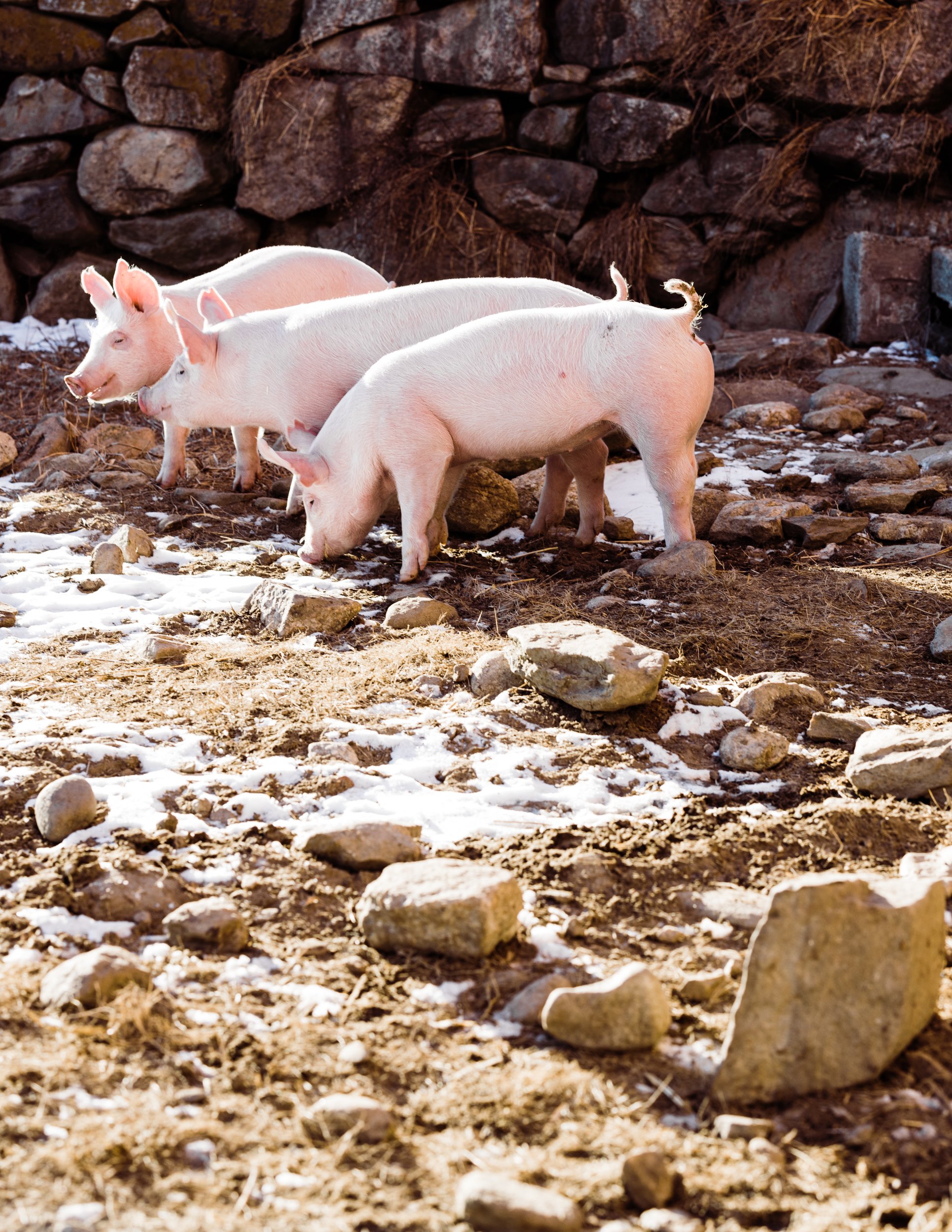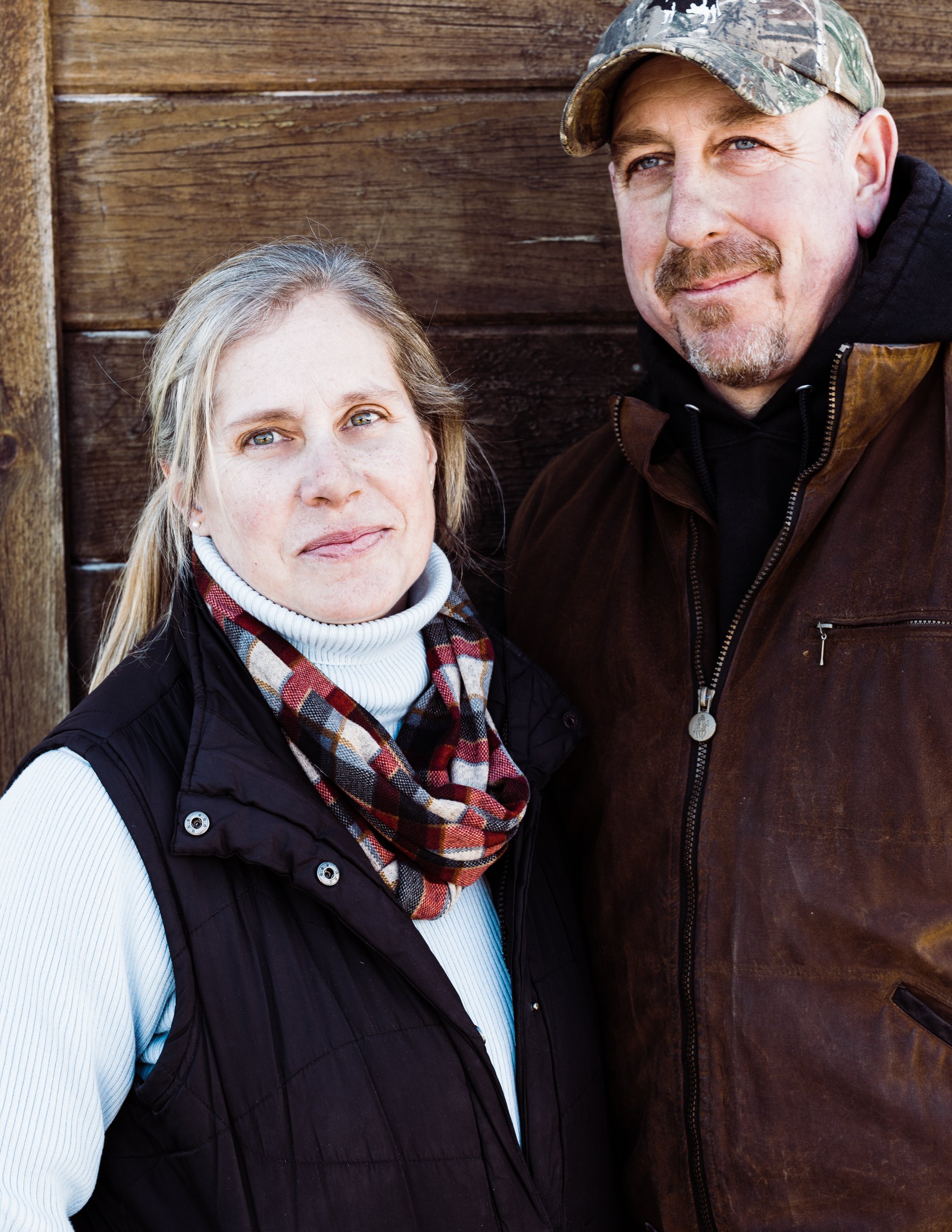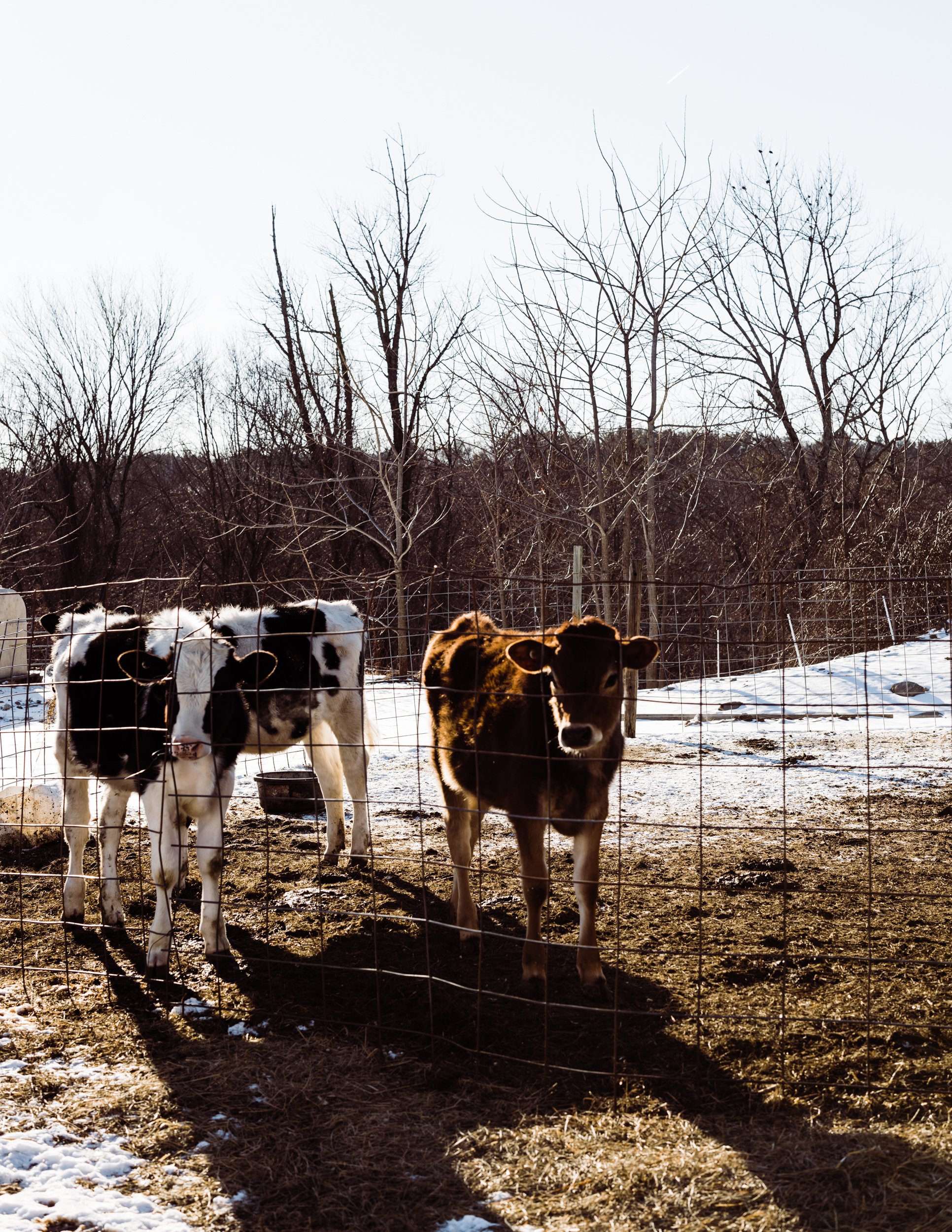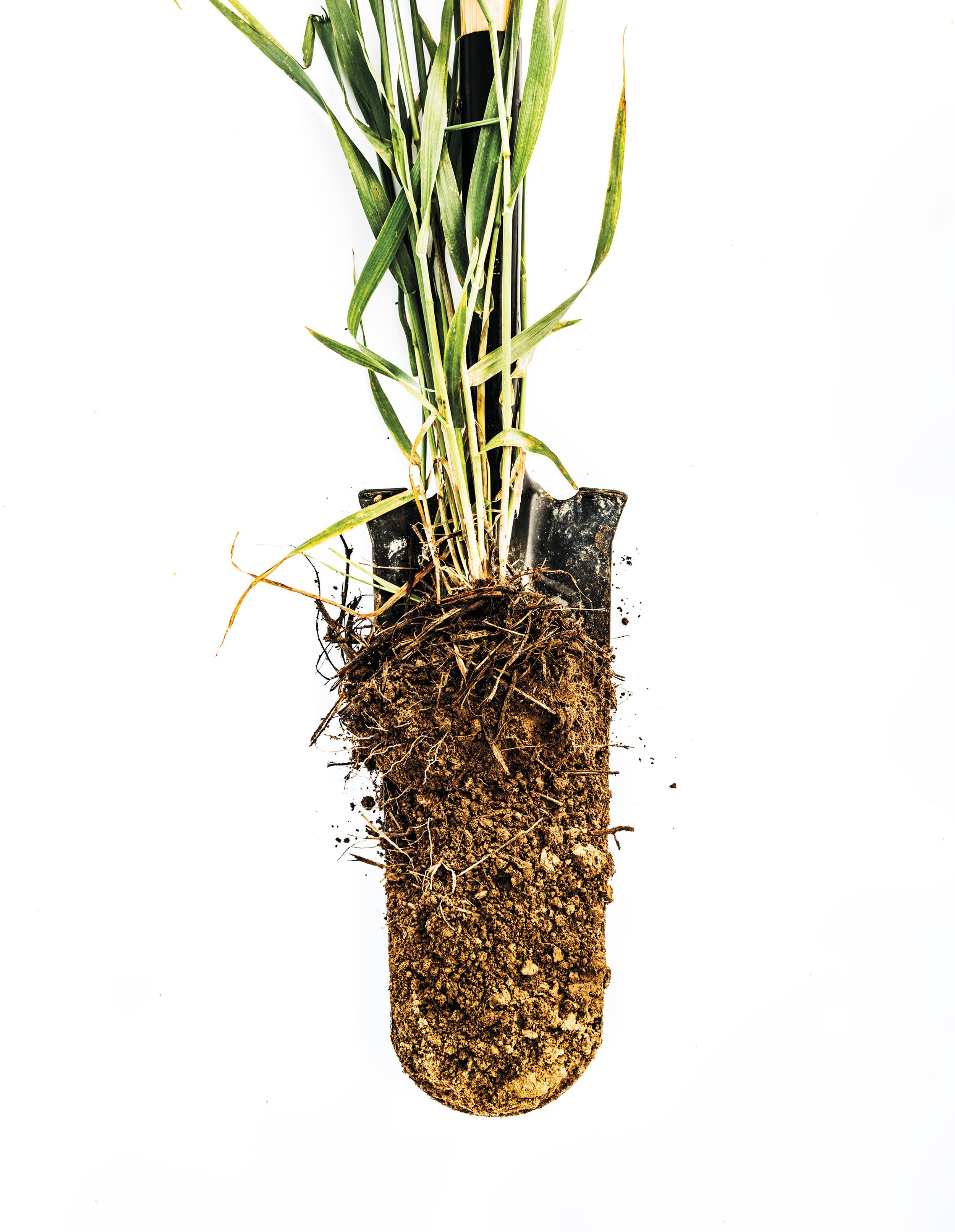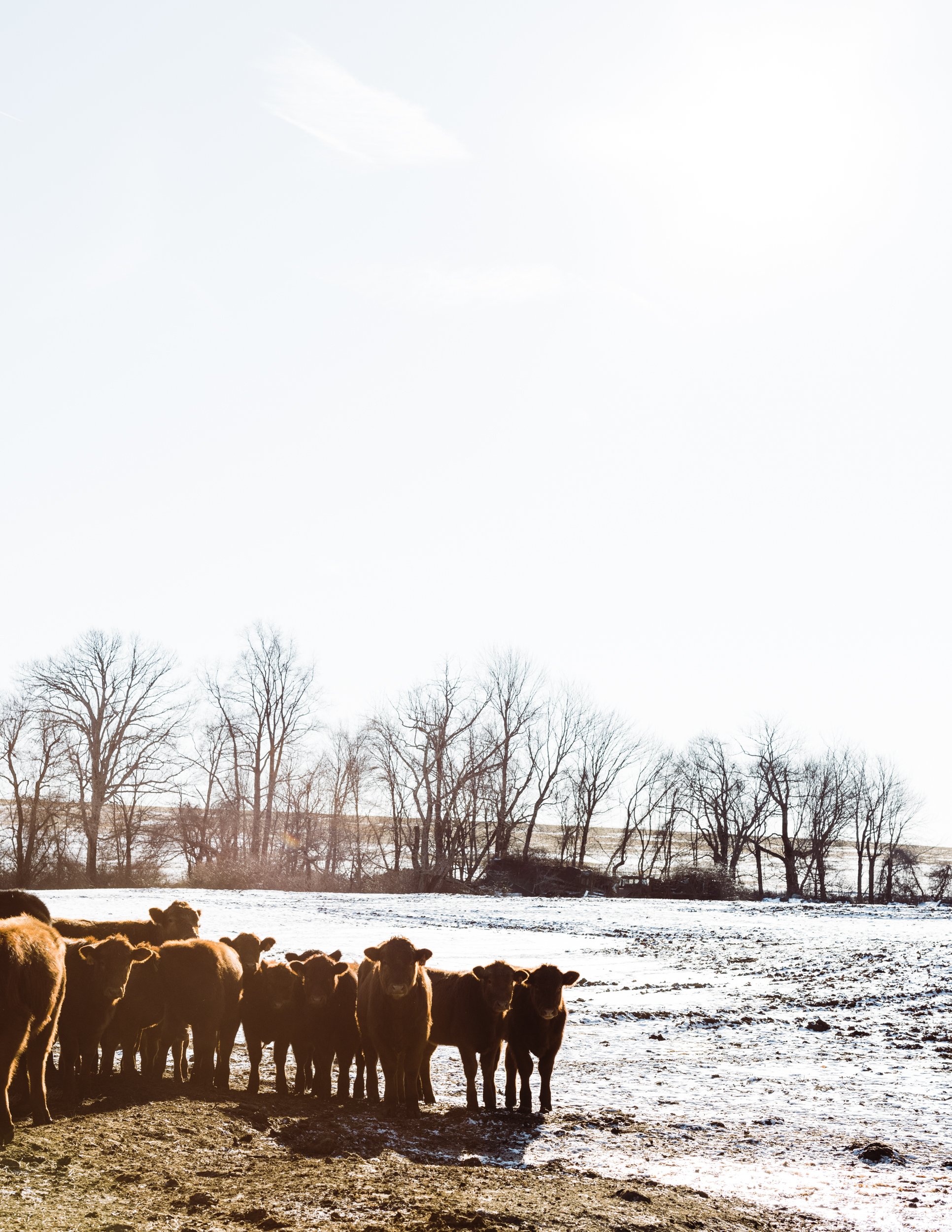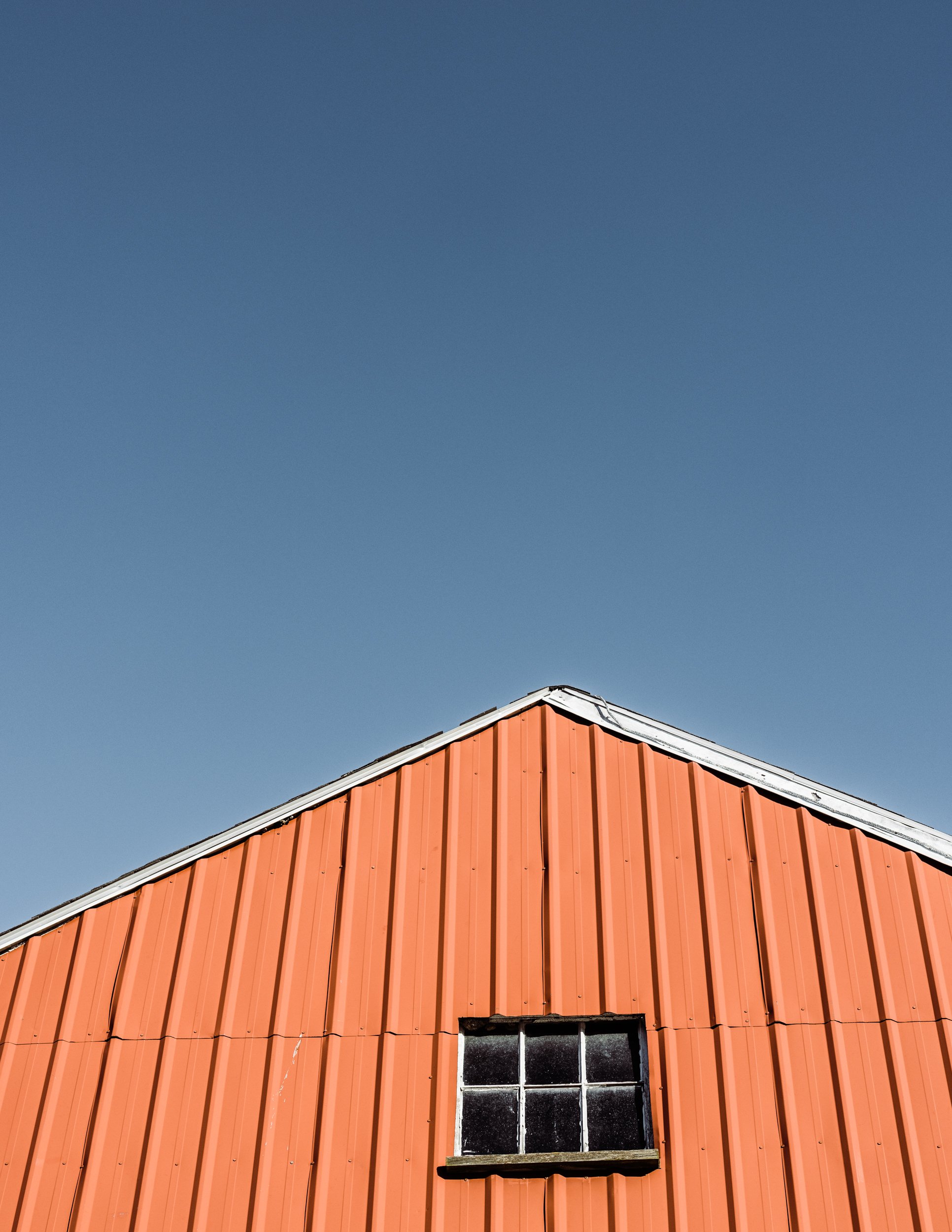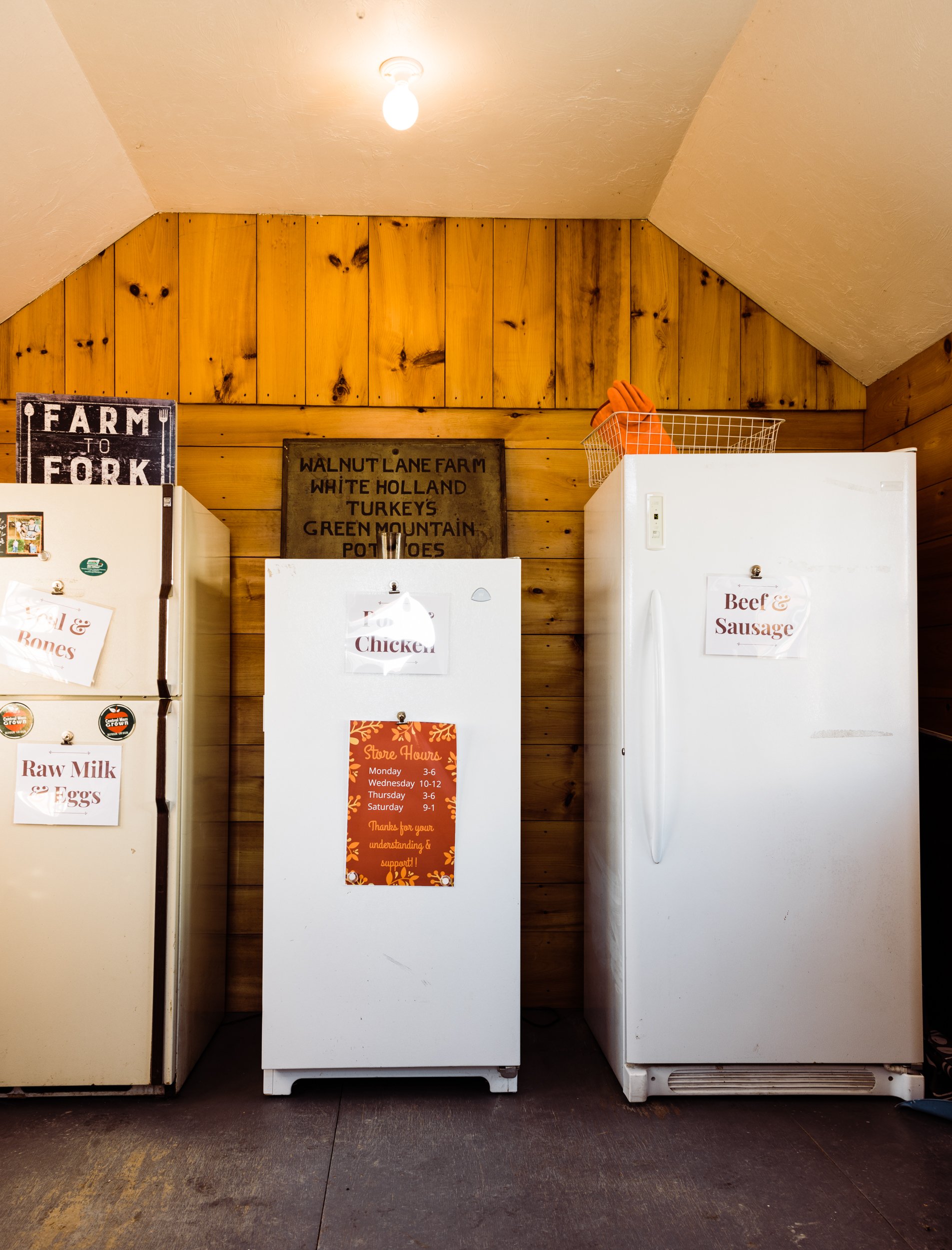Doing Things Nature’s Way at Walnut Lane Farm
Photos by Michael Piazza
Walnut Lane Farm sits atop a hill with sweeping views of rural Dudley in Central Massachusetts. There, a small herd of dairy cows produces raw milk and milk-fed veal. Grass-fed and -finished beef cows feed on and fortify their pastures, chickens lay eggs in their roosts and spend much of their days outside and pigs raised in the woods and in small pastures supply a variety of pork products. All of these animals and the land they live on are tended by a family of forward-thinking owners who farm by honoring the soil.
The Koebke family has owned Walnut Lane Farm for 112 years. Jim and his wife, Krisanne’s, three sons are the fifth generation to grow up on the farm. A testament to the length of the family’s involvement with the community is the name on the sign for the road that links the farm to State Highway 31. It’s called Koebke Road.
Jim Koebke’s great-grandfather emigrated from Germany in the 1880s and bought the original acreage in 1910. Jim’s grandfather raised White Holland turkeys and Green Mountain potatoes on the farm, where there have always been a few dairy cows. Over the years the family acquired additional acres, now totaling 230, and developed the farm as a dairy operation. Jim and Krisanne met in 4-H, where they each showed dairy cows.
“We’re cow people at heart,” says Krisanne. “My favorite part of the day still is milking time.”
After Jim and Krisanne married, they rented the farm from his parents. In 1992 they purchased the business, then a thriving dairy operation with 90 cows. “It was strictly wholesale milk production,” Krisanne explains. “We sold [our milk] to Garelick Farms.”
By the early 2000s the dairy industry began to experience down cycles. Milk prices paid to farmers held steady or decreased at the same time their expenses were increasing. “For every hundred pounds of milk I sold, I was losing $2,” Jim says.
Ten years ago, the couple decided to diversify and instead sell directly to consumers. They researched breeds of beef cows and settled on South Devon, an English breed similar to Angus. Instead of requiring grain to reach their market weight, South Devons are known for achieving an impressive marbling of fat in their muscles from grass feeding and finishing. Four years ago, Jim and Krisanne sold most of the dairy herd. They increased their flock of chickens, adding meat birds to the egg-laying hens, and purchased piglets to develop pork and ham products.
Though wholesale milk prices have languished, the market for raw milk has flourished and the Koebkes were able to tap into growing demand from customerswilling to drive to the farm for it. Their current herd of 17 dairy cows is meeting that demand with raw milk sold in gallon and half-gallon containers in the farm’s bright and cozy on-site store.
The laying hens, pigs and veal calves are also fans of raw milk, according to Krisanne. Using milk from the farm’s cows supplements their fellow animals’ diet and helps to balance milk production. “Feeding the pigs milk seems to give the pork something extra, flavorwise,” she says.
Like so many small farmers in the state, the Koebkes developed relationships with other local producers. The Charlton Bee Company, for example, maintains hives on the farm and sells honey in the farm’s store. There, you’ll also find fermented products from Real Pickles in Greenfield and goat milk soap from Elzire’s Acre in Princeton. The Koebkes proudly point to another product—their own compost, rich in organics—as indicative of how the farm is regenerating.
The process started about 18 years ago with Jim’s decision to try no-till planting of corn into a cover crop of cereal rye. No-till substitutes a seed drill or planter for a tiller pulled by a tractor. It uses a single disk to slice the soil and deposit seeds without disturbing the soil’s structure. The increasing cost of fuel for the farm’s tractor prompted the change, Jim says, but the effects were long term.
A major shift in his outlook and farm practices occurred when Jim began to investigate the burgeoning field of regenerative agriculture. His major influences, he says, were the webinars and articles by conservation agronomist Ray Archuleta, who works with the U.S. Department of Agriculture’s Natural Resources Conservation Service, and author Gabe Brown, who wrote Dirt to Soil.
“I decided to educate myself,” Jim says, and he dove into online forums and listened to podcasts. He learned that “soil has a microbiome and the goal is to get it to cycle properly.” He became convinced that he could increase the fertility and health of the soil on his farm naturally.
Another important lesson was that the use of synthetic fertilizers “actually shuts down mycorrhizal activity,” the symbiosis of plants and fungi, Jim says. “This impedes root growth and soil health.” He realized that by making some changes he could stop using synthetic fertilizers, a common practice on farms since the 1940s.
Jim converted to using a fish-based foliar organic fertilizer as a step in the process of enriching his soil. “I haven’t used synthetic fertilizer in two years,” he says. “I’ve learned I don’t need it.”
The Koebkes now take a holistic approach to farming, looking at all the elements that contribute to a thriving agriculture. It means, for example, factoring elements such as rainfall into their calculations.
“The amount of rainfall we get—45 to 50 inches a year—makes for good grass growing. It’s why we went to a grass-based operation,” Jim says. Last summer, working with the regenerative agriculture consulting firm Understanding Agriculture, Jim planted 60 acres of cover crop containing a mixture of sorghum, Sudan grass, millet, sunflower, buckwheat, cow peas and brassicas with minimal amendments to the soil.
“It came up looking good,” he says, “but by the end of July, after all the rain we got, it looked horrible. I called Shane, our consultant, and asked if I should fertilize. He advised me to walk away; let it dry out.”
Jim followed the advice and a month later, “the field was lush and green with grasses that grew up to seven feet,” he notes. “That meant the ground was cycling carbon.”
The Koebkes also consider grazing an important factor in soil regeneration. Instead of completely clearing a field of grass, “the goal is for the cows to consume 50% of the grass and trample the rest,” Jim explains. “They’re putting armor on the soil, which is a huge part of the equation: keeping it cool and feeding the earthworms.”
When the cows are let into the fields in early spring, they’re on the move every day. “Using perimeter and interior removable fencing, we can set up a new paddock in about five minutes,” Jim says. The grazed acres are left alone for 35 to 60 days. As a result, “the soil comes back so much better,” he adds.
Healthy soil produces higher-quality grass feeding animals that produce nutrient-dense food. It’s a cyclical process. “The animals help contribute to the soil’s nutrient density and the feed we harvest from that soil helps us produce nutrient-dense meats and milk,” Jim says.
Regeneration has been good for Walnut Lane Farm and its farmers. As proof, Jim points to the animals and says, “Nothing makes me happier than to see the cows in the field and the pigs rooting around in the brush.”
This story appeared in the Spring 2022 issue.

